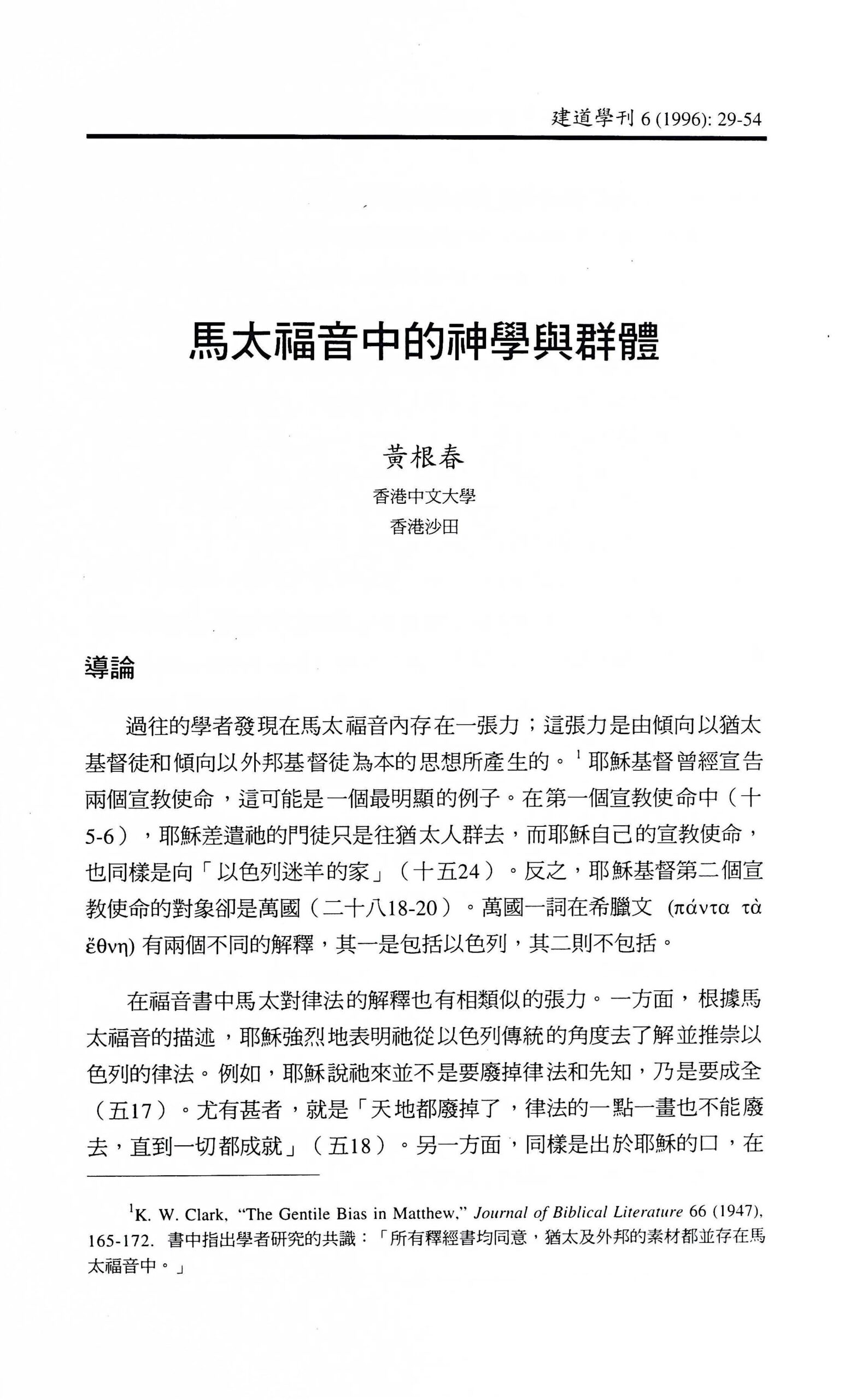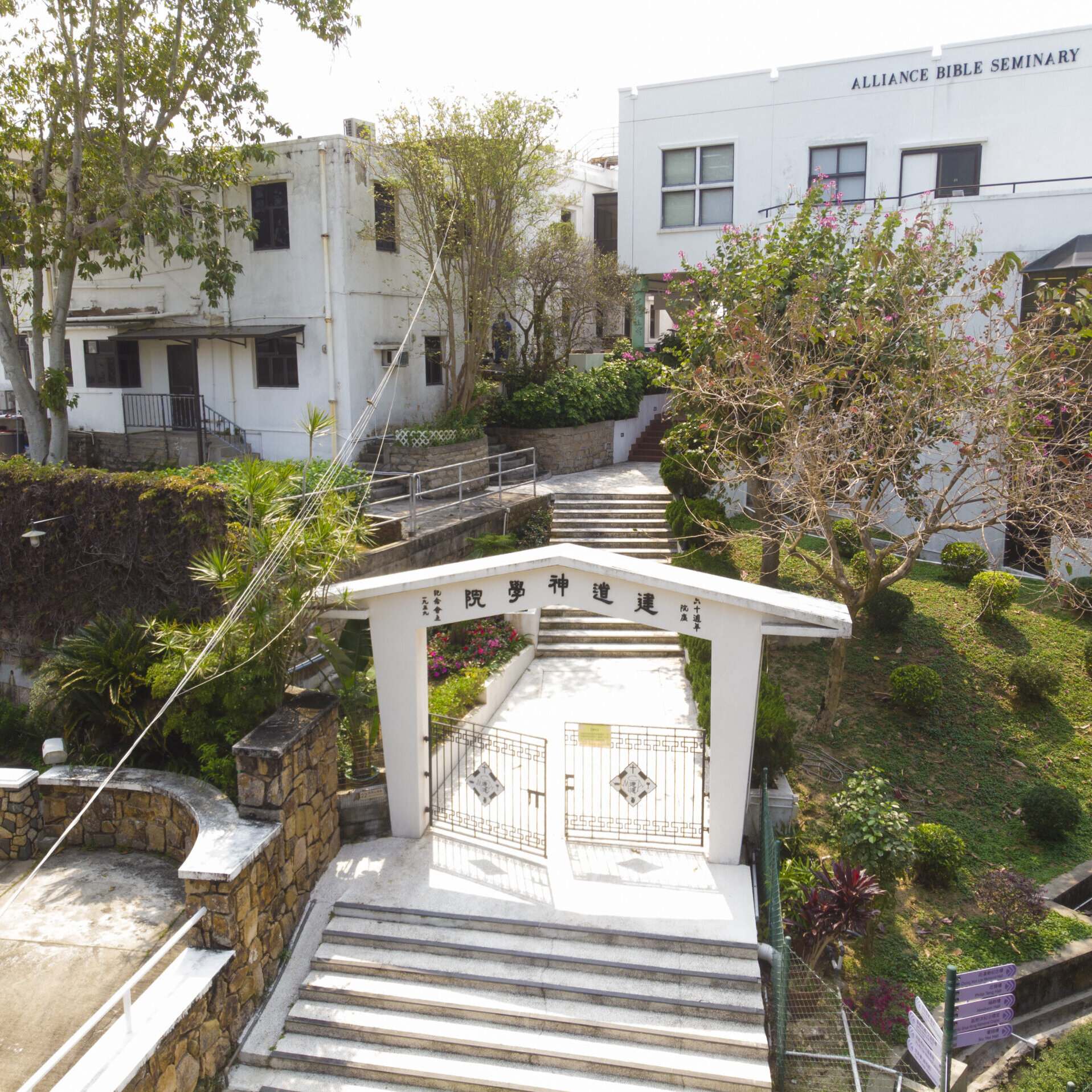馬太福音中的神學與群體 / 黃根春
撮要
在馬太福音的研究中,學者很早便覺察到有兩種不同的思想傾向,即傾向以猶太基督徒或以外邦基督徒為本的思想。這兩種思想傾向的張力可以從馬太的宣教使命(十5-6,二十八18-20)、詮釋律法的手法(五17-20,七12)及審判的概念(二十一43,二十五31-46)中看到。本文首先略述前人的研究成果,並且指出其不足之處,進而指出「歷史時序」釋經方法的局限,特別是它不能恰當地處理上述在經文裡所蕴含的張力。「同時並列」的釋經法正好可以彌補其不足之處。「同時並列」的釋經法促使我們要正視經文的思想與經文的背後所反映的信徒群體兩者的關係。宣教、律法和審判的課題所產生的張力,剛好暗示在馬太的信徒群體中有兩種不同的思想傾向,即猶太基督徒和外邦基督徒。馬太福音的編修者採納多種策略來處理信徒中的特殊情況(如刻意在經文中安排有多重詮釋的經文,結合不同的銘言,融合不同的教訓,區別不同的思想等),描繪一種文化相融和的(Inter-cultural)神學思想,讓不同文化背景的信徒可以共處。最後,本文也採用了結構性、分析性和比較性的推論,來探討馬太福音所反映的信徒群體。
ABSTRACT
Matthean scholars have long observed a tension between two tendencies, namely the Jewish Christian thought and the Gentile Christian one. These are clearly seen in the texts about the Mission (10:5-6, 28:18-20), Law (5:17-20, 7:12) and Judgment (21:43, 25:31-46). The present paper makes firstly a brief survey of past research results, and points out the inadequacy of the traditional exegetical methods (diachronous), especially in dealing with the tension in a text. The synchronous exegetical method forces us to handle the tension seriously and to deal with the relation between text and the community behind it. The two tendencies of the text imply that there were two groups of Christians, namely Jewish Christians and Gentile Christians, behind the Gospel of Matthew. In writing to that Christian community, the redactor Matthew employs some strategies (like the possibility of double or multi interpretation, combination of different maxims, generalization of teachings which seem to contradict each other, differentiation of teachings, and the commandment of tolerance), to formulate an inter-cultural theology. All these strategies aim to make the two groups live together harmoniously. Finally, this paper further employs three methods (constructive deduction, analytical deduction and comparative deduction) to trace the external circumstances of the community behind the Gospel of Matthew.
原載於《建道學刊》6期(1996年7月),頁29-54。
最新文章
新手牧者研究計劃(三):新手牧者的身心靈狀態 / 盧慧儀
2025 年 11 月 19 日
【教牧退休】好好理財 退而不憂 / 林本利
2025 年 10 月 1 日
【教牧退休】生前身後的管理:平安三寶 / 陸文慧
2025 年 10 月 1 日
編輯精選
[電子書]困境與抉擇:「建道研究中心30週年誌慶」跨學科研討會論文集/廖炳堂、倪步曉主編
2025 年 1 月 2 日
從梧州到長洲:建道神學院125年的挑戰與恩典 / 陳智衡
2023 年 10 月 1 日
微小教會的見證/高銘謙
2023 年 6 月 1 日







